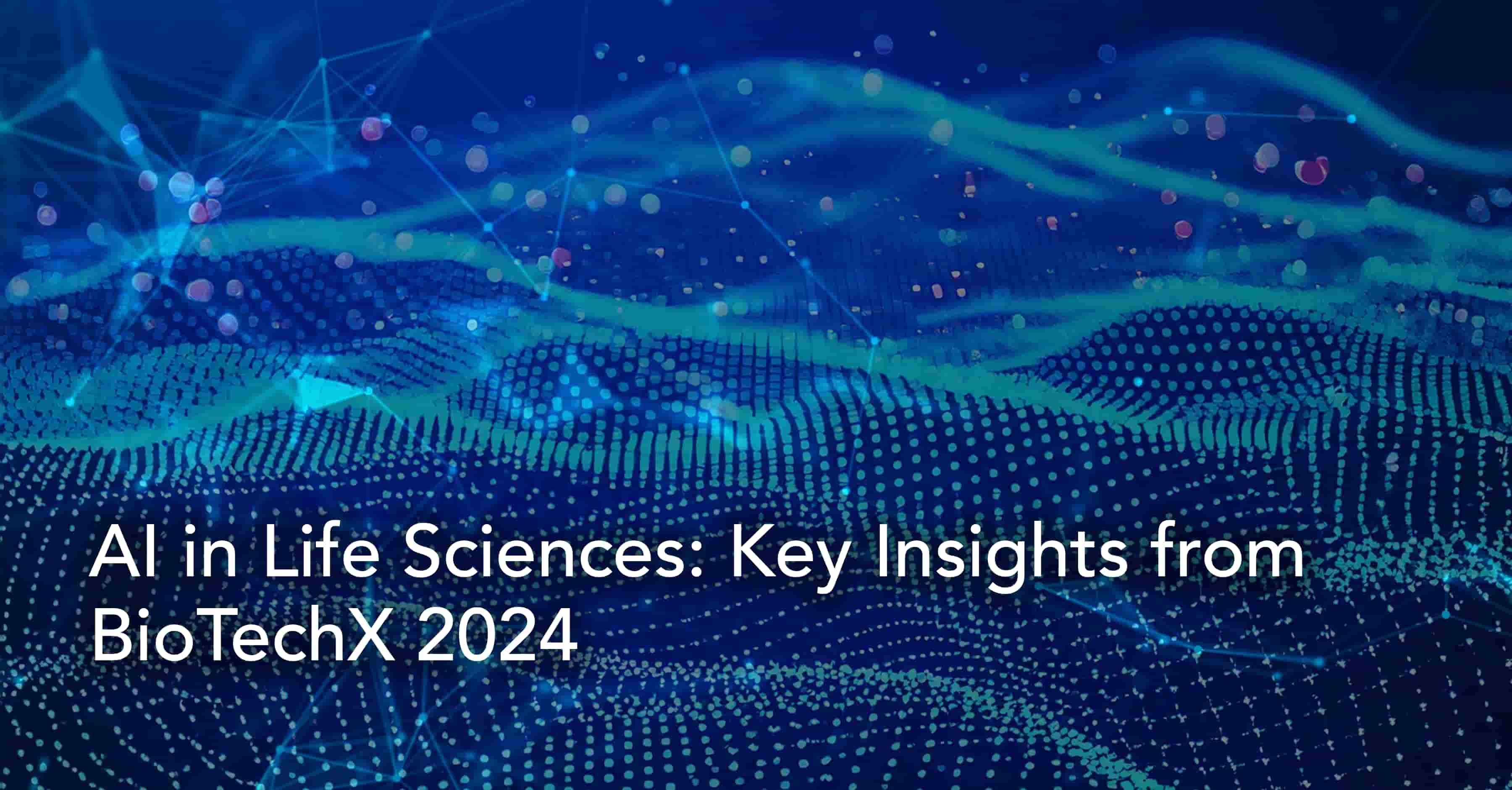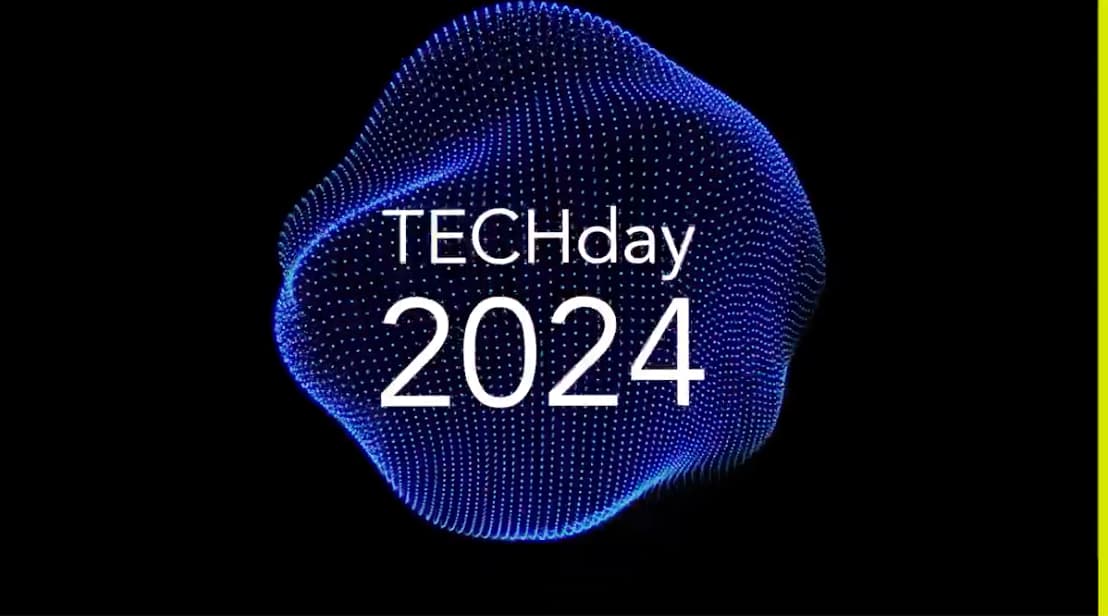AI in life sciences: Key insights from BioTechX 2024

The convergence of artificial intelligence and life sciences continues to reshape the biotechnology landscape, as evidenced at this year's BioTechX 2024 conference. The event brought together an impressive array of data scientists, AI specialists, bioinformaticians, healthcare, pharma, and life science professionals, showcasing how the integration of AI is revolutionizing every stage of the life science value chain, from early discovery to post-approval processes.
The dispersion of AI in Life Sciences
Unsurprisingly, there was a lot of emphasis on the value of including AI in the loop. But perhaps one of the most striking observations from this year’s conference was the sheer diversity of AI applications across the biosciences sector. AI-driven technologies are no longer confined to specialized research areas. Instead, AI has become an integral tool throughout the entire life science ecosystem.
The presentations demonstrated compelling use cases, across critical drug discovery and life sciences R&D processes, where the efficient integration of AI has resulted in significantly enhanced outcomes.
To highlight just a few standout use cases:
- Clinical Trial Optimization: AI-powered solutions are streamlining and expediting patient recruitment and retention, reducing sign-up times, and improving trial efficiency.
- Personalized Medicine: AI is driving the shift towards precision healthcare, enabling the creation of more individualized treatment plans by analyzing large-scale patient data, genetic information, and clinical outcomes to optimize therapeutic approaches.
- Molecular Engineering: AI is revolutionizing the development of therapeutic antibodies, generating variants with the desired binding properties and potentially superior efficacy.
These examples are but a few highlights of how AI is delivering tangible value and measurable improvements in both research outcomes and operational efficiency.

Arnout Van Hyfte, Head of Products & Platform | Dirk Van Hyfte, Head of Innovation | Ingrid Brands, General Manager
A unified approach: IPA's in vitro, in vivo, and in silico integration
At IPA and BioStrand, we take the integration of in vitro, in vivo, and in silico approaches to heart when it comes to AI-driven cultural transformation. The seamless integration of these disciplines fosters a holistic view of drug development and antibody discovery, allowing us to provide a comprehensive solution that connects biological, computational, and experimental strategies. This methodology not only enhances collaboration but also aligns with the cultural shift needed to fully leverage AI in life sciences.
The architecture for AI innovation
A significant portion of the conference focused on the architectural frameworks necessary to support effective and scalable AI deployment. Many organizations have invested heavily in establishing robust AI-powered data integration and management systems and continuous integration/continuous deployment (CI/CD) pipelines to extract value from that data. Yet, a persistent challenge remains: bridging the gap between vast data lakes and the specific needs of individual applications.
This is where solutions like the LENSai foundation model can enable a transformational impact. By serving as an intermediary layer between raw data repositories and application-specific needs, such foundation models can help organizations transform their data into analytics-ready formats. This architectural approach can be crucial for organizations looking to extract maximum value from their data assets while maintaining flexibility and scalability.
Cultural Transformation: The Human Element
Perhaps the most insightful discussions at BioTechX 2024 centered around the organizational and cultural aspects of AI implementation. Successfully integrating AI into life science organizations requires more than just technical infrastructure and should be accompanied by a fundamental shift in how different specialists, from biologists to informaticians, collaborate.
Some of the key themes that emerged in this context include:
- Early Engagement: Proactively fostering collaboration between biological and computational experts from the earliest stages of planning and design can have a positive influence on the algorithmic approach, data visualization, and refinement of analysis.
- Value-Driven: Clear definition and alignment on project value propositions will be critical to defining focus and maintaining momentum.
- Shared Accountability: AI-powered projects will thrive when both biological and computational teams share responsibility for outcomes.
The emphasis on cultural transformation also accentuates the importance for life science organizations to develop a "hybrid culture" that bridges the traditional divide between wet-lab biology and computational sciences to create an environment where both disciplines can thrive and complement each other.
Looking Ahead
BioTechX 2024 made it clear that the future of life sciences lies at the intersection of biological expertise and computational innovation. As we move forward, organizations that can successfully blend technical/technological excellence with a hybrid organizational culture that fosters collaborative, multidisciplinary research will be best positioned to leverage AI's transformative potential in the life sciences sector.
Want more insights? Explore our takeaways from BioTechX 2023 and BioTechX 2022
Subscribe to our Blog and get new articles right after publication into your inbox.
Subscribe to our blog:







